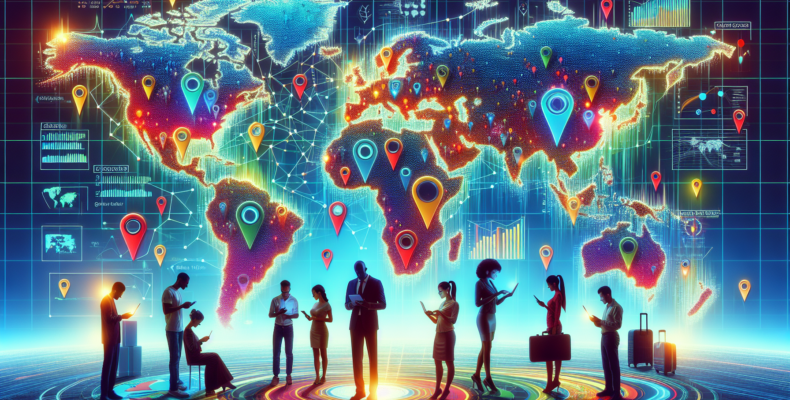Using Location Data to Measure Travel Times and Access to Amenities
Let’s dive into the world of location data – a digital treasure trove that holds the potential to transform our understanding of transport logistics and urban accessibility. This isn’t just any old number-crunching exercise, but a serious endeavor in making sense of our increasingly mobile lifestyles. How do we use the data on where we go and how we reach our destinations? Spoiler alert: it involves a lot more than just pointing to a map and saying, “Look, there’s a coffee shop!”
Understanding the Numbers
Location data comes from various sources – think your smartphone, GPS devices, and even public transport systems. But what does this data tell us? It can reveal:
- Travel Times: How long it takes people to get from A to B, which helps in assessing the efficiency of public transport routes.
- Accessibility: Identifying which areas are easy to reach and which are isolated, thus highlighting inequities within urban landscapes.
- Patterns of Movement: Where do people tend to go? Understanding frequently visited hotspots can assist in resource allocation.
This is not just data for data’s sake. It’s about enhancing our everyday lives by making sure that the services and amenities we want are actually accessible when we need them. So, where do we start unraveling this puzzle?
The Pillars of Data Utilization
Firstly, we’re talking about integration. All this data needs to come together like a well-rehearsed orchestra, where individual instruments harmonize to provide a full-bodied sound. The same applies here; the more sources of location data we integrate, the clearer picture we get. But there’s a catch – quality matters. Garbage in, garbage out, as they say. So, we must ensure that the data is accurate.
Next up, we need analysis. It isn’t enough to have the numbers; we need to crunch them. Smart algorithms can decipher trends, forecast travel times, and help urban planners decide where to place that shiny new park or coffee shop. And let’s not underestimate the human touch. Analysts must interpret this data’s intricacies and implications, considering factors like socio-economic backgrounds and community needs.
Bridging the Gap
Now, let’s consider the bigger picture – or rather, the broader landscape. It’s not just about individual data points. We need to assess how this data can influence urban design and public policy. How do we bridge the gaps identified by the data? Here’s how:
- Policy Making: Data-driven decisions can reshape policies to better serve communities, ensuring that marginalized areas aren’t overlooked.
- Urban Development: Understanding mobility patterns can inform where to build new housing, parks, and services, ensuring that neighborhoods flourish.
- Resource Allocation: When you know where people need the most assistance, you can allocate services in a more targeted way – free bus passes, improved road access, and more.
It’s all about creating an equitable environment for everyone. Imagine if your commute to work didn’t include circling the block for half an hour or finding out that the nearest grocery store was on the other side of town.
The Future of Mobility
So, what does the future hold? Well, the use of location data is set to expand further. Emerging technologies like machine learning and artificial intelligence are paving the way for even smarter analysis. Now we can anticipate not just where people go, but also predict how they might change their routes or habits based on real-time events.
The goal? A seamless city experience where accessibility is baked into the very fabric of our daily commute. This means integrating bikes, public transport, and even walking paths into a cohesive system that minimizes travel woes.
Conclusion
In summation, using location data to evaluate travel times and access to amenities is more than a numbers game. It’s about creating a cohesive urban environment that truly works for its citizens. With the right tools and insights, we can reshape how we live, making our environments work smarter for us. So the next time you check your phone for a route, remember – there’s a lot going on beneath the surface, and that data could very well be the key to a better city life.
